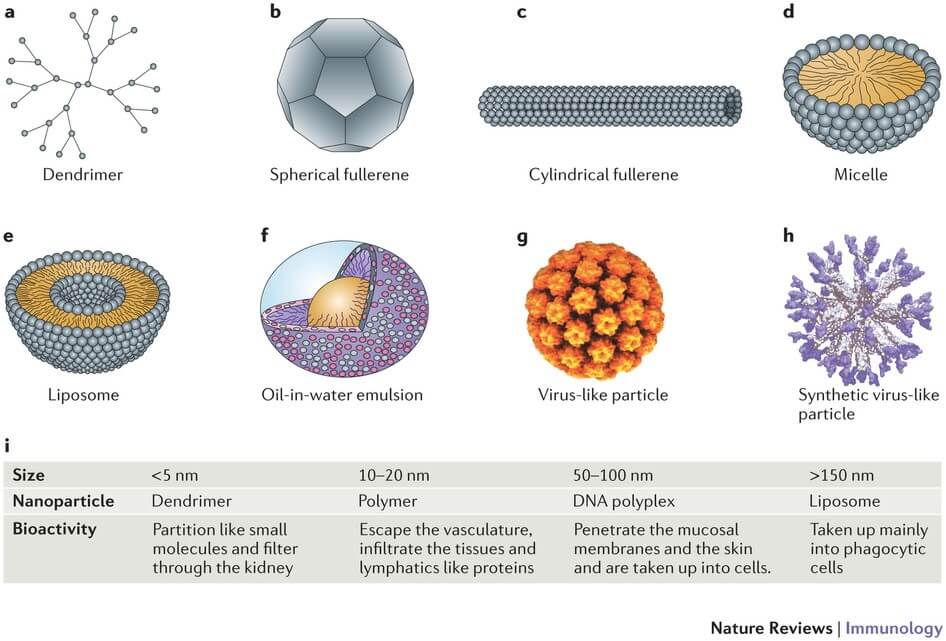MemPro™ Virus-like Particles (VLPs) Technology
Creative Biostructure has developed MemPro™ Virus-Like Particles (VLPs) Technology based on our magic Membrane Protein Production platform to efficiently express and purify membrane proteins.
During the past decades, VLPs have developed and evolved to become a widely and commonly used technology, especially in the field of vaccinology, immunology and virology. There are many advantages in expressing membrane proteins as VLPs: firstly, they are homogeneous and physically well defined, capable of maintaining the native structures of target membrane proteins of high densities; secondly, they can be used to detect membrane protein interactions, such as antibody screening, phage and yeast display, immunogens production, and ligand binding assays.

Figure 1. Examples of nanotechnologies applied to immunoregulation
(Douglas M. Smith, e tal., Nature Reviews Immunology 13, 592–605 (2013) doi:10.1038/nri3488)
Expression host systems of recombinant virus-like particles (VLPs) including but not limited to:
- E. coli
- Yeast
- Baculovirus
- Mammalian (stable and transient expression)
- Plant system
- Cell free system
VLPs include a number of biological objects, such as uncharacterized structures with viral morphology, empty structures of viral origin, self-assembled gene products, etc. Narrowly, VLPs is defined as replication incompetent macromolecular protein assemblies that consist of one or several structural proteins of different viruses and can be obtained from recombinant organisms via the expression of the corresponding cloned genes. Various systems have been used in the successful construction of VLPs from different sources including bacterial, yeast, insect cells, plant and mammalian hosts. VLPs also provide a highly efficient vaccine platform and a wide variety of VLPs have entered clinical development.
In many situations, VLPs construction is tightly correlated with the goal to obtain multimeric protein structural assemblies with special characteristics for subsequent applications. In the experience of a successful VLPs construction, to some extent, ‘‘universal VLPs,’’ e.g., are extremely helpful for different aims with the same or similar principles of actions, which are highly crucial for the development and engineering of the technology platform.
First, VLPs can be applied for different usages based on their intrinsic characteristics without bringing any conformational changes to the target proteins. In addition to the virus packaging, VLP intrinsic characteristics, such as amino acids regions located on surface, can serve as targets for the introduction of various functional molecules. For VLPs without reactive surface-located amino acids, the important universality can be achieved by targeted mutagenesis, such as TMV.
Taking into account the advances in vaccine and immunology development, VLPs have a positive reputation as systems of academic, industrial, and commercial significance and are no longer only ‘‘mere laboratory curiosities’’. Creative Biostructure can provide our services to meet the requirements from any of the above client resources.
References:
1. Soma S.R. Banik. Antibody Strategies for Membrane Protein Targets. Drug Discovery & Development magazine: Vol. 12, No. 9, October, 2009, pp. 14-17.
2. Andris Zeltins. Construction and characterization of virus-like particles: a review. Mol Biotechnol. 2013 Jan;53(1):92-107.
3. Natasha Kushnir, et al. Virus-like particles as a highly efficient vaccine platform: diversity of targets and production systems and advances in clinical development. Vaccine. Dec 17;31(1):58-83.